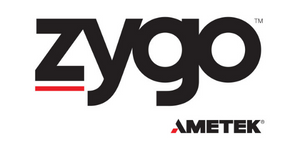One of the most abundant elements on Earth is hydrogen, and it is becoming increasingly acknowledged as a critical source for fuel cells in the transportation industry. Fuel cells directly convert a fuel’s chemical energy into usable energy, i.e., heat and electricity, without combustion.

Image Credit: Zygo Corporation
Fuel cells have recently entered the electric vehicle market due to their efficiency, longevity, and rapid refueling.
Numerous larger truck manufacturers are considering fuel cells as a solution for long-haul goods transportation, minimizing harmful emissions.
How Do Hydrogen Fuel Cells Work?
A fuel cell comprises a cathode, anode, and an electrolyte membrane. Hydrogen is fed through the fuel cell’s negatively charged anode, while oxygen is fed through the positively charged cathode.
Protons flow across the porous electrolyte membrane, while the electrons flow to the cathode from the anode in an external circuit, generating an electric current and excess heat.
The oxygen, electrons, and protons combine at the cathode to generate water molecules. Since no moving parts are involved, fuel cell operation is silent and highly reliable. Fuel cell manufacturers must depend on innovative techniques to consistently provide quality bipolar plates and membranes with strict specifications.
For bipolar plates, quality characteristics, including channel straightness, texture, and shape, may hinder the flow of hydrogen or oxygen, reducing the overall efficacy of the electrochemical process.
Channel straightness and shape affect the efficient flow of liquid or gases through the fuel cell. Any deviation from the design may cause a pressure change, hindering the flow rate of the materials and gradually reducing energy output.
Characterizing Fuel Cell Surfaces
The surface properties of fuel cells affect their efficiency and must be kept within specified target parameters. To overcome these challenges, manufacturers use non-contact optical metrology inspection.
Traditionally, manufacturers utilized coordinate measuring systems (CMMs) to review channel depth or plate flatness.
However, this only offers tens to hundreds of points to capture the surface under examination, which is very time-consuming.
Manufacturers that utilize 3D non-contact optical profilers achieve rapid and repeatable bipolar plate channel inspection with millions of data points, capturing the whole surface with high lateral resolution.
One example of plate inspection may be performed with the Zygo 0.5x ZWF objective, with its large field of view (greater than 30 mm). Through area stitching of a whole plate, it is feasible to determine channel depth, straightness, and overall sealing flatness.
Determining channel depth with high accuracy also enables fuel cell plate designers to reduce plate thickness, which subsequently optimizes the entire fuel cell stack and reduces overall mass.
As fuel cells lead innovation efforts for electric vehicles, strict manufacturing specifications must be met for their production.
Optical surface topography measuring instruments, e.g. Zygo’s 3D non-contact optical profilers, deliver in-process surface texture and form measurements. This is a considerably more comprehensive, quicker, and more cost-efficient inspection compared to CMM inspections.
As automotive engineers and designers continue to push the boundaries of clean and efficient energy systems, Zygo will continue collaborating with manufacturers to enable precise measurements of their surfaces and produce knowledgeable insights.

This information has been sourced, reviewed and adapted from materials provided by Zygo Corporation.
For more information on this source, please visit Zygo Corporation.